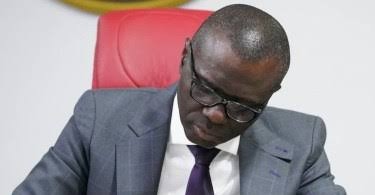EXPLAINER: What is a government white paper?
Moyosore Onigbanjo, the Lagos attorney-general, was appointed to chair the white-paper committee.
“Four of them will very quickly look through and bring forward a white paper within the next two weeks that will be considered at the Lagos state executive council and would be gazetted as a white paper coming from the panel of enquiry,” he said.
The move by the governor to raise a white paper was described by some as duplicity and a waste of time. But is it?
WHAT IS A WHITE PAPER?
A white paper is an official document that analyses the issues surrounding a subject matter, along with proposed solutions. Note that white papers are generated or demanded across political, business and technical fields. However, the focus here is the government white paper.
A government white paper is a document putting forward proposals for law-making in a policy area. It serves as a way the government comes up with, and presents policy preferences before it introduces legislation.
In the context of the #EndSARS report, the white paper will review the recommendations of the panel, and then present action points that the government is expected to take.
Put it this way: while the judicial panel conducted an investigation and offered recommendations, the white paper will be a compilation of what is expected to be the government’s action points, as well as what can be gazetted, become policy or law.
There have been various recommendations by white paper committees set up by the federal and state governments to address varying issues.
In 2011, a committee on the restructuring and rationalisation of federal government parastatals, commissions and agencies was constituted, and headed by Stephen Oronsaye, former head of civil service. In its report submitted on April 16, 2012, the committee recommended a reduction in the number of federal agencies from 263 to 161 — with a proposal for the scrapping of 38 agencies, merging of 52 agencies, while 14 should revert to departments in ministries — to reduce the cost of governance in the country.
The white paper on the report was published in March 2014 and was followed by the white paper implementation committee inaugurated in May 2014. However, recommendations of the white paper were not implemented at the time. In November 2021, the President Muhammadu Buhari-led federal government inaugurated two sub-committees to review the white paper report.
Speaking on the development, Boss Mustapha, secretary to the government of the federation (SGF), had said the non-implementation of some of the recommendations of the report was at a disadvantage to the federal government.
“For a number of reasons, most of which were anchored on political expediency, the white paper not only rejected a large number of the recommendations, it also merely noted an equally greater number of others. But again, even those accepted were not implemented,” he said.
The implication of this is that the proposals put forward in a white paper may not be final, and can be subjected to further review.
“Generally, the committee’s recommendations were far reaching and if properly implemented, could reduce the cost of governance. But there were few errors of judgement which would not serve the best of public interest if implemented. For example, the decision to scrap the Fiscal Responsibility Commission,” the Centre for Social Justice said, in a 2014 review of the Oronsaye committee report and the federal government white paper.
“However, the FGN White Paper reversed a good number of the gains that would have accrued from the full implementation of the Committee’s recommendations. The White Paper employed extraordinary caution and at the end of the day watered down some of the recommendations,” it added.
Another example is the white paper panel set up by the Kwara government on the unlawful sale of state properties between 1999 and 2019. According to the white paper, which was presented to Abdulrahman Abdulrazaq, governor of Kwara, in May 2021, the panel called for the prosecution of public office holders including Bukola Saraki and Abdulfatah Ahmed — both former governors — over allegations of mismanaging government assets.
WHY WHITE AND NOT PINK OR BLUE?
The term, ‘white paper’, dates back to 20th century Britain, and is used to refer to reports issued by the government with the ‘white’ indicating that the document is available for public access.
The report of the Lagos judicial panel on police brutality was not a public document; it was leaked to the public. What is expected to be made public is the white paper when it is finally compiled and submitted.
Meanwhile, in countries such as the Republic of Ireland and the United States, a green paper is a tentative government report of a proposal without any commitment to action. It serves as the first step in changing the law. Green papers may result in the production of a white paper.


